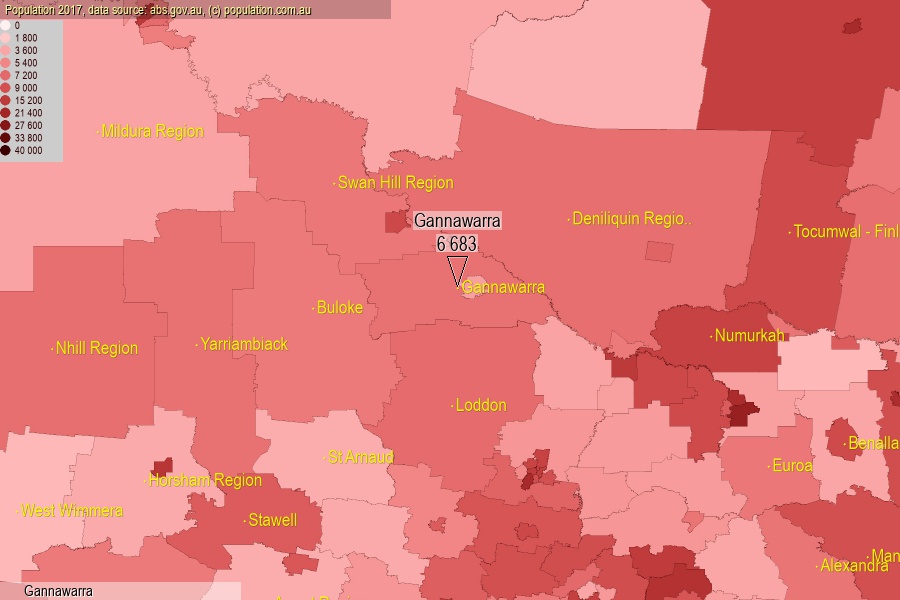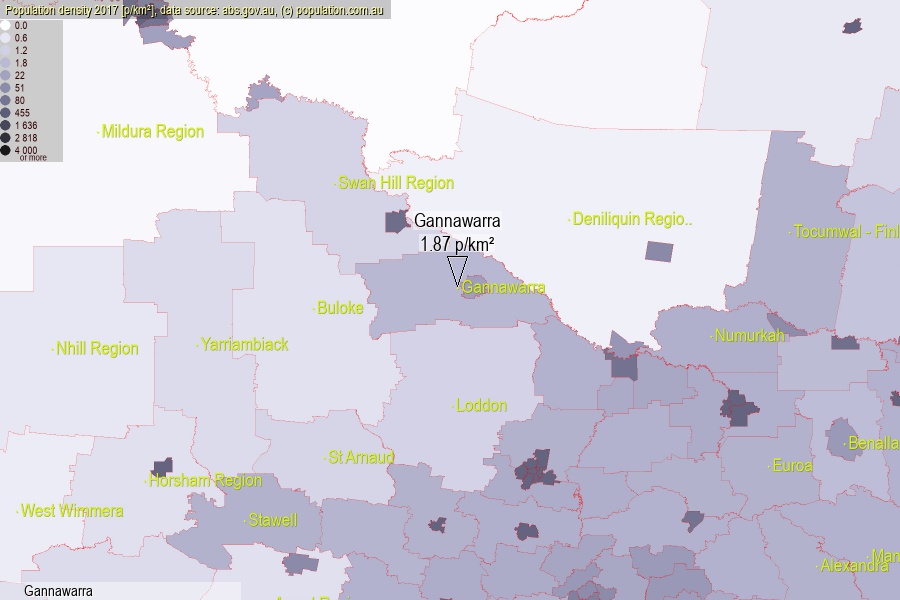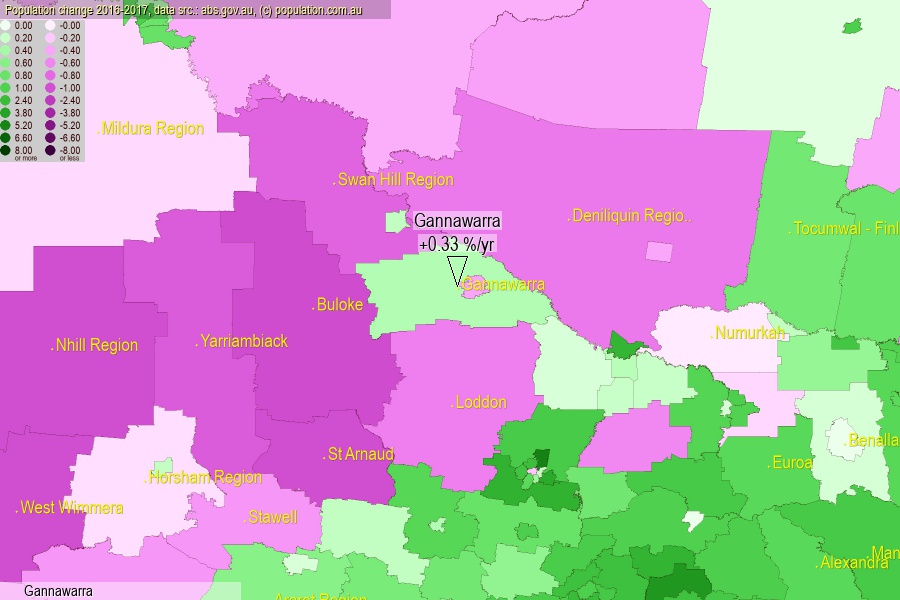 population.com.au
population.com.auLast official estimated population of Gannawarra (as Statistical Area Level 2) was 6 683 people (on 2017-06-30)[2]. This was 0.03% of total Australian population and 0.104% of VIC population. Area of Gannawarra is 3 568.20 km², in this year population density was 1.87 p/km² . If population growth rate would be same as in period 2016-2017 (+0.33%/yr), Gannawarra population in 2025 would be 6 862. [0]



Click to enlarge. Gannawarra is located in the center of the images.
Population [people], population density [p./km²] and population change [%/year] [2]
View borders » (new window) [4]
[1991-1992] +0.24 %/Yr.
[1992-1993] -0.82 %/Yr.
[1993-1994] -1.26 %/Yr.
[1994-1995] -0.97 %/Yr.
[1995-1996] -0.98 %/Yr.
[1996-1997] -1.60 %/Yr.
[1997-1998] -1.12 %/Yr.
[1998-1999] -1.28 %/Yr.
[1999-2000] -1.24 %/Yr.
[2000-2001] -0.52 %/Yr.
[2001-2002] -0.97 %/Yr.
[2002-2003] -1.24 %/Yr.
[2003-2004] -1.52 %/Yr.
[2004-2005] -1.18 %/Yr.
[2005-2006] -0.72 %/Yr.
[2006-2007] -2.33 %/Yr.
[2007-2008] -1.31 %/Yr.
[2008-2009] -1.35 %/Yr.
[2009-2010] -2.01 %/Yr.
[2010-2011] -2.71 %/Yr.
[2011-2012] +0.63 %/Yr.
[2012-2013] +0.41 %/Yr.
[2013-2014] +0.24 %/Yr.
[2014-2015] +0.20 %/Yr.
[2015-2016] +0.50 %/Yr.
[2016-2017] +0.33 %/Yr.
[0] Calculated with linear interpolation from officially estimated population
[1] Read more about SA2 and Australian Statistical Geography Standard (ASGS) on abs.gov.au
[2] Population data from Australian Bureau of Statistics (Population and density: 2017; change: 2016-2017)
[3] Digital Boundaries: Australian Statistical Geography Standard (ASGS) 2016.
[4] Border coordinates are simplifyed using Ramer-Douglas-Peucker algorithm.